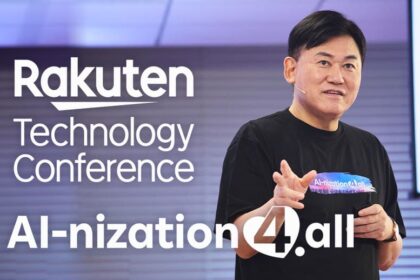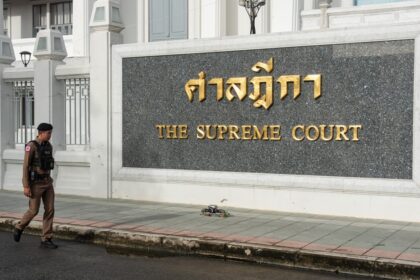A first for a non English speaking country
Taiwan has launched a pilot that gives qualified students from four leading universities a new route into select U.S. institutions without submitting Test of English as a Foreign Language scores. The path relies on English medium instruction coursework completed in Taiwan, not standardized language tests, and it marks the first time major American universities have recognized such coursework from a country where English is not the primary language. The move reflects years of investment in bilingual higher education and a growing confidence among U.S. partners in the rigor of Taiwan’s English taught courses.
- A first for a non English speaking country
- How the pilot works
- Why TOEFL has been a barrier for many students
- What English medium instruction means in practice
- What officials say
- Benefits for students and universities
- Quality control and the limits of the pilot
- How students can prepare now
- What counts as strong EMI evidence
- How this compares with current U.S. language rules
- What it means for Taiwan’s bilingual push
- What to Know
Under the initiative, students from National Sun Yat sen University, National Cheng Kung University, National Taiwan University, and National Taiwan Normal University can apply without TOEFL to Arizona State University, New York University, Teachers College at Columbia University, and the University of Maryland. The Ministry of Education says the waiver depends on meeting a defined threshold of courses taught fully in English. The pilot grew out of Taiwan’s push since 2021 to expand bilingual education, increase international mobility, and raise the share of programs that train students to operate comfortably in global academic and professional settings.
For Taiwan, the recognition places its universities in a select group. Until now, TOEFL or IELTS exemptions based on prior study have usually applied to degrees from countries where English is the main language of instruction. The new arrangement acknowledges that Taiwan’s EMI ecosystem has matured to a level that U.S. admissions offices can evaluate and trust.
How the pilot works
The waiver is tied to EMI performance, not a blanket exemption. Students must complete a required number of courses taught and assessed in English at one of the four participating Taiwanese universities. Partner schools in the U.S. will verify that applicants have met the EMI threshold and performed to a defined standard. Admissions criteria beyond language also remain in place, so program prerequisites, GPA expectations, and materials like transcripts and recommendations still matter.
Eligible institutions
Four Taiwanese universities are included at the start: National Sun Yat sen University, National Cheng Kung University, National Taiwan University, and National Taiwan Normal University. The U.S. partners are Arizona State University, New York University, Teachers College at Columbia University, and the University of Maryland. Delegations from these American schools have visited Taiwan to observe EMI classes, meet faculty, and examine syllabi and assessments to understand how students learn and perform in English.
Timeline and next steps
The pilot includes an early exchange component. Eight students from the four Taiwanese universities will travel to partner campuses in February 2026 for a short program that allows U.S. faculty and admissions staff to see how EMI trained students adapt inside an English speaking academic environment. Feedback from that exchange, along with classroom observations in Taiwan, will guide the final settings for the waiver, including which course types qualify, how many credits are required, and whether any minimum GPA in EMI courses is needed. The first application window for Taiwanese students under this pathway is slated to open in August, with seat numbers to be negotiated by the eight universities. If the trial proceeds as planned, officials expect a broader rollout in the next academic year.
The pilot does not remove subject specific requirements. Applicants to graduate programs will still need to meet program standards that may include tests like the GRE or GMAT, research proposals, portfolios, or interviews. The EMI route only replaces the English proficiency test for those who meet the agreed criteria.
Why TOEFL has been a barrier for many students
For decades, U.S. colleges and universities have required international applicants to show English proficiency through standardized tests. The most common options are TOEFL and IELTS. Policies differ by school and degree level, but the basic rule is consistent: if your prior degree is from a country or region where English is not the primary language, you must submit an approved test score to demonstrate readiness for English based coursework.
Typical minimums illustrate the bar. A top public research university such as the University of California, Berkeley sets a common graduate threshold near TOEFL iBT 90 or IELTS 7. Many selective institutions adopt similar or higher levels for graduate programs. For undergraduates, minimums are often lower but still substantial. A prominent public university like Clemson lists a TOEFL iBT minimum of 80 or IELTS 6.5 for first year admission. While some campuses accept alternatives like Duolingo English Test, they also maintain cut scores and reserve the right to require additional screening or coursework for admitted students.
Exemptions traditionally apply if an applicant earned a full degree from an institution in a country where English is the primary language or completed substantial recent study in the United States. Applicants from Taiwan have usually needed a test score even if their home campus offered many courses in English. The new pilot for EMI based waivers addresses that gap by directly evaluating the English learning environment in Taiwan itself.
What English medium instruction means in practice
English medium instruction refers to courses taught, discussed, and assessed in English, not just materials or slides. Faculty deliver lectures in English, students complete assignments and exams in English, and interaction in the classroom is expected to be in English as well. Quality EMI is about more than switching languages. It aligns content teaching with communication objectives, so students gain subject mastery while using English to read critically, present ideas, and work in teams.
Participating universities in Taiwan have already built significant EMI capacity. National Sun Yat sen University reports more than 1,340 EMI courses offered in the past five years, which represent roughly 30 percent of its course catalog over that period. National Taiwan Normal University says all undergraduate departments offer at least 18 credits of EMI courses. Students describe tangible payoffs. One senior at NSYSU in applied mathematics said that using English to host international visitors and tutor math has increased his income and strengthened his confidence about future career options. Another student at NTNU said that EMI broadened his academic horizons and helped him secure an exchange opportunity in Germany.
For U.S. partners, the EMI framework provides an observable environment to judge proficiency. A course where presentations, labs, and seminar discussions happen in English gives admissions staff a way to calibrate outcomes. That is why the pilot includes on site class observations by U.S. university representatives and a short exchange designed to test students in real campus settings abroad.
What officials say
Taiwan’s Ministry of Education has framed the pilot as both a recognition of progress and a practical measure to reduce costs and time for students who already study intensively in English. Ministry leaders emphasize that EMI is now widespread across flagship campuses and that more departments are redesigning content to support English based learning.
Education Minister Cheng Ying yao said the policy reflects international confidence in Taiwan’s bilingual reforms and urged universities to keep expanding high quality EMI offerings.
Cheng said: “This milestone program shows that Taiwan’s bilingual education has gained international credibility.”
The U.S. side is engaging through an educational exchange foundation, with visits and joint review of classes to confirm standards. Taiwan’s partner in the pilot, Fulbright Taiwan, has publicly encouraged students to consider EMI pathways.
Fulbright Taiwan Executive Director Randall Nadeau highlighted the benefits for graduates who can operate in English across borders.
Nadeau said: “Bilingual education strengthens the competitiveness of young Taiwanese and enables more countries to recognize Taiwan’s contributions and value.”
Officials managing higher education policy offered a practical timeline for the first cohort. They described a small group traveling in February 2026 to give both sides experience with placement, advising, and academic support in an English immersion setting abroad.
Chen Hao hui, director at the Department of Higher Education, explained that the initial delegation will help fine tune selection criteria, the EMI credit threshold, and the number of places available at each partner school before applications open more widely.
Benefits for students and universities
The most immediate benefit is time and focus. Preparing for TOEFL or IELTS requires months of practice and a paid test appointment, often with repeat attempts to reach target scores. Students who already spend their days presenting, writing, and taking exams in English can now invest that time in coursework, research, or internships while still showing proof of language readiness through EMI performance.
The policy could also broaden the applicant pool for the four U.S. partners. Academic ability sometimes gets filtered out by single snapshot tests. EMI transcripts offer a larger sample of performance under classroom conditions, including cumulative grades, participation, and project work completed in English. For U.S. faculty reviewing applications, those signals can help identify students who will thrive in discussion heavy seminars or lab teams.
Taiwanese universities stand to gain from stronger ties with U.S. campuses that recognize the quality of their English instruction. Joint reviews, visiting delegations, and targeted exchanges can lead to new research links and co developed programs. Students get more choice, and departments get feedback from global peers about course design and outcomes.
Quality control and the limits of the pilot
Safeguards are built into the trial. U.S. universities observed classes in Taiwan before agreeing to the waiver, and they will recheck outcomes during and after the February 2026 exchange. The partners are building a shared understanding of which courses count as EMI, which credit loads demonstrate sustained English learning, and what grade thresholds correlate with strong performance after arrival in the U.S.
The pilot is intentionally narrow at the start. Only four Taiwan universities and four U.S. partners are in scope, seat numbers are negotiated among the eight institutions, and the EMI threshold is being finalized. The waiver replaces only the English test requirement. It does not guarantee admission, and it does not change program specific prerequisites. Graduate programs may still expect GRE or GMAT scores, prior research, or interviews.
There are also equity considerations within Taiwan. Some campuses have built extensive EMI catalogs, while others are still scaling up. The pilot focuses on universities with established bilingual initiatives. If the model works, officials have said they would explore widening participation to more institutions in the future, with common standards to protect quality.
How students can prepare now
Students at the four eligible universities who want to apply under the EMI pathway can position themselves by planning their course mix and documenting outcomes carefully. Advising offices and international affairs units on each campus can help interpret the criteria once the final threshold and eligible course list are published.
Practical steps
Focus on courses where the entire learning process is in English. That includes lectures, group work, and assessments. Seek feedback on presentations and writing to build academic vocabulary in your field. Keep syllabi, graded assignments, and project summaries organized, since these materials may help academic referees describe your English performance in detail.
- Map out EMI courses early to reach the credit threshold by your intended application date.
- Target strong grades in EMI classes. The pilot is about performance in English, so consistency matters.
- Ask faculty who teach in English to serve as recommenders. Their letters can verify classroom interaction and presentations in English.
- Review program prerequisites at the U.S. partner schools. Some graduate programs expect GRE or GMAT scores, writing samples, or portfolios.
- Maintain a backup plan. Policies can evolve, and programs are competitive. If your target program insists on a test score, schedule a test window in time.
Students who are not at the four pilot universities can still benefit from EMI by building English fluency through content courses, which helps with future tests, interviews, and research collaborations. Many universities in Taiwan continue to expand their EMI options, and the pilot’s visibility may accelerate that trend.
What counts as strong EMI evidence
Not all EMI is identical, so admissions offices will look for consistent signals. Courses with active discussion and frequent graded writing often provide stronger evidence than lecture only classes. Capstone projects, lab reports, and seminar presentations demonstrate applied language use in a discipline. A transcript showing steady EMI credits across several semesters signals sustained engagement, not a last minute sprint.
U.S. faculty who observed classes will report on teaching quality and student participation. That qualitative context supports the numbers on a transcript. The February 2026 exchange will supply additional data on adaptation to English speaking campus life, which can shape the final criteria before a broader rollout.
How this compares with current U.S. language rules
The pilot sits alongside, not against, standard English proficiency policies. Many selective U.S. graduate programs ask for TOEFL iBT scores near 90 or above, and top programs often expect higher. Undergraduate minimums can range from TOEFL iBT 70 to 100 depending on the campus and major. Schools sometimes waive tests if applicants completed degrees in countries where English is the primary language or if they completed a substantial amount of recent study at accredited U.S. institutions. Applicants from Taiwan have typically not qualified for an automatic waiver unless they studied abroad in those places.
By recognizing EMI coursework in Taiwan, the partner universities are adding a new category of acceptable evidence. The change is limited to the pilot schools and will be governed by agreed credit and performance thresholds. Each U.S. partner retains control over admissions and can ask for additional proof if needed.
What it means for Taiwan’s bilingual push
Taiwan’s bilingual higher education program began in 2021 with the goal of making campuses more competitive and helping graduates participate in international research and industry networks. The pilot is one of the first external validations from large U.S. universities that the effort is achieving measurable results. It also creates incentives for departments to refine EMI course design, since external partners will review outcomes and student progress in detail.
At NSYSU, EMI now represents a substantial share of the catalog, and administrators say more programs are transitioning core classes to English. At NTNU, every undergraduate department offers a minimum of 18 credits of EMI, which makes it easier for students to build a coherent path. Students report that EMI improves confidence in interviews, strengthens presentation ability, and opens exchange options during their studies.
What to Know
- Taiwan launched a pilot that lets eligible students apply to four U.S. partner universities without TOEFL if they meet defined English medium instruction thresholds.
- The Taiwan universities are National Sun Yat sen University, National Cheng Kung University, National Taiwan University, and National Taiwan Normal University.
- The U.S. partners are Arizona State University, New York University, Teachers College at Columbia University, and the University of Maryland.
- Eight students from Taiwan will join a short exchange in February 2026 to give partners more data on EMI outcomes in real campus settings.
- Final waiver criteria will set which course types count, how many EMI credits are required, and whether minimum EMI GPA standards apply.
- The waiver replaces only the English test requirement. All other academic and program prerequisites remain in force, including GRE or GMAT for some graduate programs.
- Participating U.S. universities observed EMI classes in Taiwan as part of quality review and will continue monitoring during the pilot.
- Officials expect a wider rollout after the trial phase if outcomes meet expectations, with potential expansion to more universities.












